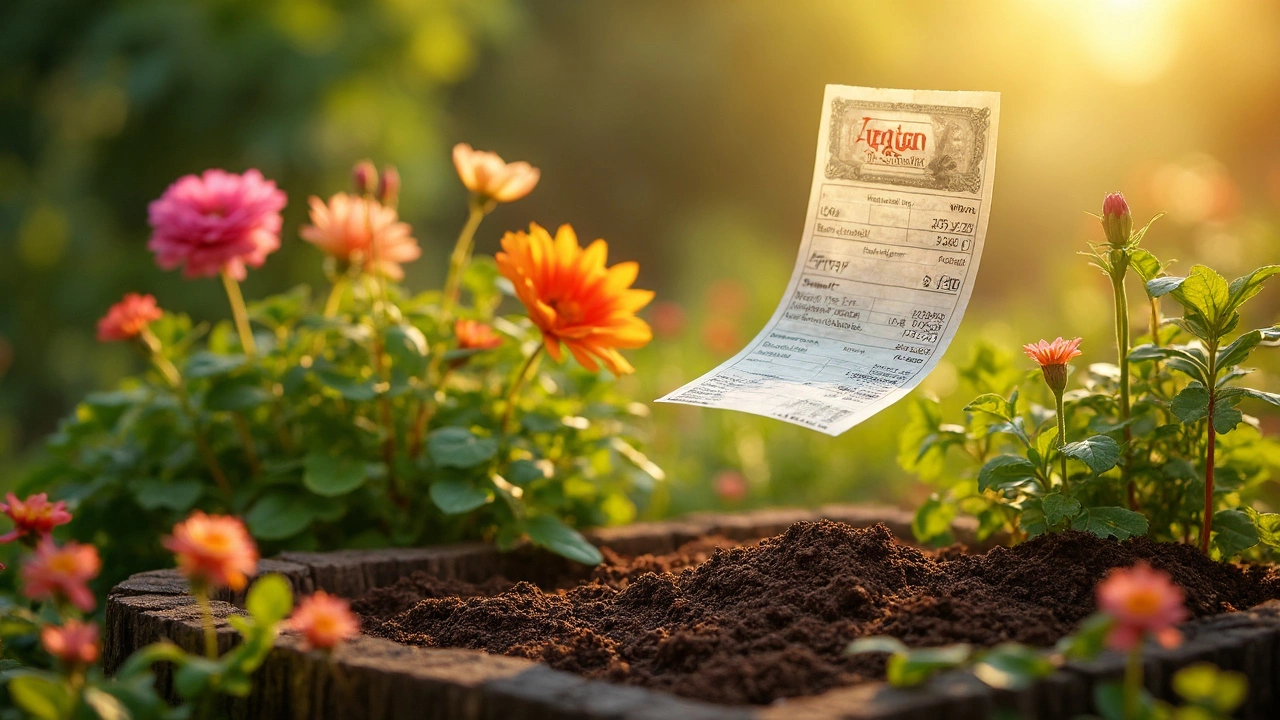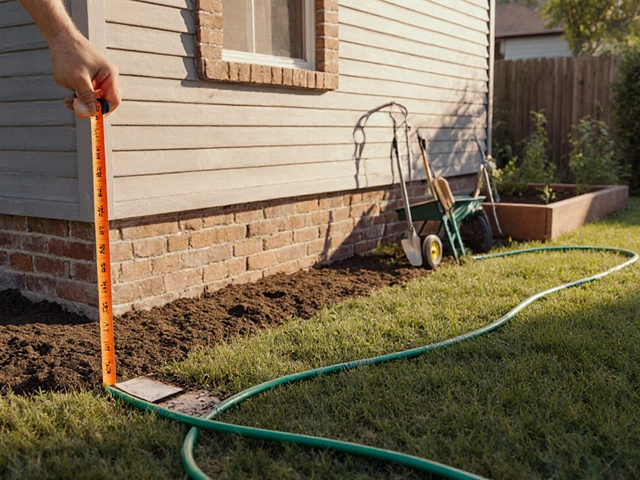If you've been considering diving into raised bed gardening, you might already know about the upsides like better drainage and easier access. But let's talk about the other side of the coin—the cons. First, there's the initial hit to your wallet. Raised beds aren't cheap; between materials and high-quality soil, the upfront costs can stack up fast.
I know what you're thinking: Isn't the investment worth the benefits? Well, for some, yes. But for others working within a tight budget, the costs can be a real stumbling block. Besides, don’t forget about the ongoing maintenance. Raised beds need more TLC—think regular soil-additions and managing the wood frames to prevent rot.
- Initial Cost Concerns
- Ongoing Maintenance Needs
- Soil Matters
- The Space Requirement
- Water Drainage Challenges
- Weather Impacts
Initial Cost Concerns
Thinking about diving into raised bed gardening? Before you haul out the tool box, let's chat about the initial expenses. While these gardens can make your veggies thrive, they can also hit your wallet pretty hard at first.
Material Costs
To start, you'll need to build those beds. Materials like untreated cedar or composite wood are popular choices because they last longer, but they come with a higher price tag. Want some numbers? Expect to spend several hundred dollars for a decent-sized bed, and that doesn't even include tools.
Soil and Amendments
Once the structure is ready, filling it requires high-quality soil, which can be a bit of a sticker shock if you're accustomed to planting directly in the ground. This is one place you can't skimp—after all, the soil quality will directly impact your plants. It's not just soil; amendments like compost and other organic materials add to the bill.
A Cost Breakdown Example
| Item | Average Cost |
|---|---|
| Wood (e.g., cedar for a 4x4 bed) | $80-$150 |
| Soil and Amendments (per bed) | $100-$200 |
| Tools (if buying new) | $50-$100 |
Of course, prices vary based on your location and specific needs, but this gives a rough idea. And if you're going big on multiple gardens, these numbers multiply fast.
If you're on a budget, consider using reclaimed materials or starting with smaller beds and expanding as you go. While the payoff of raised bed gardening is often worth it, being aware of the financial commitment upfront can help you plan better and avoid any surprises.
Ongoing Maintenance Needs
Sure, setting up raised beds can feel like quite the achievement. But, it doesn't end there—maintaining them comes with its own set of chores. Let's see what keeps a gardener busy with these elevated plots.
Soil Maintenance: More Than Just Dirt
Over time, the soil in raised beds tends to deplete. This happens because it's not directly on the ground, and it benefits more from rain runoff and nutrients in the earth. You'll need to replenish it with high-quality compost or soil mix at least once a year. If you're a high-harvest gardener, you might be doing this even more often.
Frame Care: Keeping the Structure Strong
Unlike traditional gardens, raised beds have a structure to maintain. Wood is the most common material, and it can rot or warp over time, especially with constant exposure to water and weather. Regularly check your frame for signs of decay or damage, and consider treating the wood with a sealant. Metal and composite structures are more durable but still require occasional checks to expose any rust or cracks.
Weeds and Pests: Unexpected Guests
You'd think being elevated would prevent weeds and pests, but not exactly. Weeds might invade from above, and pests can find their way in, especially if there's tasty produce to munch on. Laying a barrier fabric at the base of your bed can help reduce weed issues, while pests might need more hands-on approaches like manual removal or natural repellents.
Keeping raised beds in tip-top shape does take some effort, but many think the benefits outweigh the work. And hey, nothing's more satisfying than seeing your well-maintained garden burst with life!
Soil Matters
When it comes to raised beds, the type of soil you use is crucial. Unlike ground gardens, you're starting with a blank slate. This gives you control over your garden's environment, but it also means more responsibility.
Custom Soil Mixes
The challenge? You need to create a high-quality soil mix. This usually means combining topsoil, compost, and other organic materials to build the perfect growing medium. If you skimp on quality here, your plants might struggle. Many people go for a mix that’s one-third topsoil, one-third compost, and one-third soilless medium like peat moss or coconut coir.
Cost Implications
High-quality soil isn't cheap. Sourcing enough for a few large garden beds can cost more than expected. Plus, over time, you'll need to replenish it to maintain nutrients, which adds up.
Nutrient Management
Nutrient levels can be tricky to manage in raised beds. You'll need to test your soil periodically to know what your plants need. Adding compost or organic fertilizers can keep things thriving, but it's another layer of effort.
Drainage and Erosion
Having control of the soil mix helps with drainage, yes, but too much drainage can lead to quicker erosion of the soil. It demands regular checks and balancing to ensure you’re not losing those precious nutrients faster than expected.

The Space Requirement
When you're thinking about setting up raised beds, space can be a big deal. Unlike traditional gardens where plants can be spread out, raised beds are more structured. This means you need to plan out precisely where they'll fit in your yard.
If you've got a sprawling yard—great! But if you're working with a smaller space, like an urban backyard or balcony, measuring out the available space becomes crucial. Raised beds typically require paths between rows for accessibility, so factor in space for walking too.
Measuring and Planning
Start by measuring your area and mapping out the layout. Keep in mind, you'll want your beds to be no wider than four feet. Why? So you can easily reach the middle without straining your back. If you need a row of them, remember to save room for paths, usually about two feet wide.
Space-Saving Tips
- Consider vertical gardening solutions to maximize space use. Adding trellises for climbing plants can help.
- Think about tiered beds which can create more surface area without spreading out horizontally.
- If everything feels too cramped outside, some folks bring small raised beds indoors for herbs or small veggies.
Always remember, it's a balance game between fitting in your kitchen gardening passion and making sure you can easily manage the space you have.
Water Drainage Challenges
Alright, let's dig into water drainage. Raised beds are known for that sweet drainage advantage. But sometimes, they can overdo it. You see, the very thing that makes them great for preventing waterlogging can lead to a problem: your plants drying out too fast.
Picture this: you've just spent a weekend filling your raised beds with the best soil mix money can buy. You plant your veggies, water them, only to find a thirsty crop just a few days later. This is the downside of having well-draining soil in some climate conditions or during particularly hot weather. Constant watering can become tedious, especially if you're not one to hang around the garden every day.
Improving Drainage Without Overdoing It
You might be wondering, "How do I balance it out?" Well, here's a trick: try adding organic matter like compost to the soil. It helps retain moisture without waterlogging. Lay down a layer of mulch on top to keep the moisture locked in—much like putting a lid on your morning coffee. Keeps it nice and warm!
Drainage Considerations Based on Location
Not every kitchen gardening setup is the same. If you're in a rain-heavy area, raised beds might be a perfect match. On the flip side, in drier areas, be prepared for some extra watering duties. This maintenance aspect is something you can control to some extent, but it’ll take a bit of experimentation and effort to get right.
Overall, understanding these drainage issues helps you avoid surprises. With a few tweaks and some planning, you can manage water drainage challenges effectively in your raised beds.
Weather Impacts
Gardening in raised beds might seem like a great idea, but don't forget Mother Nature's whims. One major issue is temperature. Raised beds warm up quicker in spring, which can be fantastic if you're eager to get planting. However, this can be a double-edged sword. In summer, they can get too hot, stressing your plants and drying out the soil faster than you'd expect.
Then there's the issue of water. Raised beds tend to drain excess water more quickly, which is helpful during rainy spells but a headache in drought conditions. During dry periods, plants in raised beds might need more frequent watering.
Protecting Your Plants
Here’s the thing: You can work around nature's quirks. If heat is a problem, consider adding mulch. It'll help keep the soil temperatures moderate and moisture locked in.
And if water retention becomes an issue, you might want to look into adding organic matter or even investing in a drip irrigation system. These systems can be a lifesaver, providing consistent moisture without overdoing it.
- Remember, in areas with extreme weather, choosing the right materials for your raised bed is crucial. Metal might heat up more than wood, for instance.
- Consider planting heat-tolerant or drought-resistant plants if your climate presents regular challenges. It's all about making smart choices!
Overall, understanding how weather impacts your raised beds means tweaking your approach. A bit of planning goes a long way in making sure that your bounty is as robust as possible despite what the weather throws your way.





